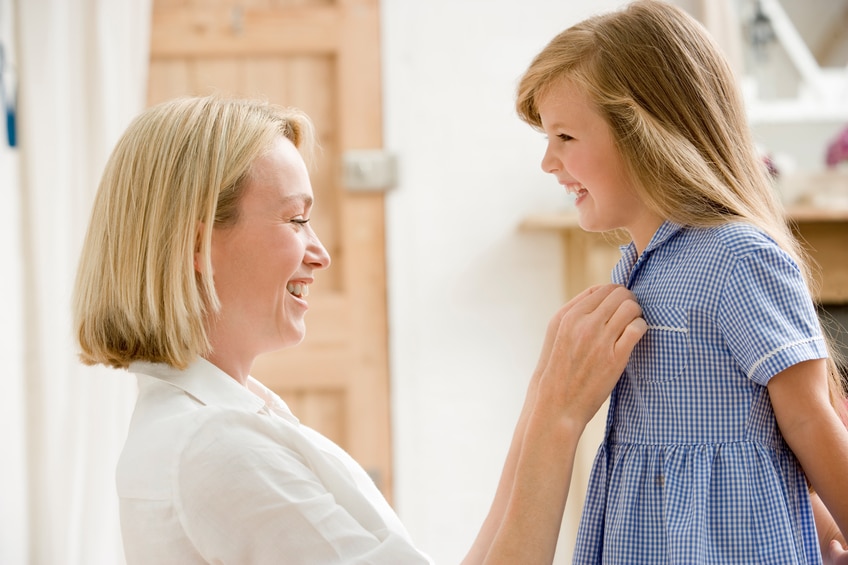MED-EL
Published Aug 12, 2016
2 Daily Tasks to Build Your Child’s Communication Skills

Make rehabilitation both fun and efficient by playing learning games with your child during your daily activities! We share some simple ideas for building your child’s communication skills during your morning and nighttime routines.
Getting dressed
Try out these activities when helping your child to get dressed for the day. Make sure you have at least two changes of clothes and a bag owned by your child. Select a range of clothing items with different colors, sleeve lengths, textures and thickness. Some examples of clothing you could use include: pants, T-shirt, cardigan, sweater, skirt, dress, shorts, trousers, socks, tights, shoes, and boots.
- Begin by drawing your child’s attention to the bag. Encourage them to open it and peek inside. Involve your child in playing with the clothing and encourage responses from them along the way.
- Help your child pull out some items and talk about whose clothes they are. You can have fun with this, such as trying to put on clothes or shoes that are too small for you. Prompt your child to communicate by joking that their shoes are your shoes.
- Encourage your child to take off their shoes and socks, or allow you to do so, and change them for ones out of the bag. Offer choices like “Do you want to put on boots or slippers?” Play and talk with your child as you help them to dress, and have some fun together! Tickle under their arms, say “boo” as their head pops out of the sweater, or count their toes.
Remember to encourage your child to physically participate in these activities, such as by allowing them to secure the velcro fasteners or to pull up their trousers.
Dinnertime
Involving your child in dinner preparations is a great way to prompt speech and build communication skills, regardless of their age. Here are some ideas you can try out:
- Ask your child to lay out a table cloth. Talk about where to put it, for example, not on the floor but on the table. Indicate that there is no food on the table, and ask, “What comes next? Where’s the food?”
- Encourage your child to open a drawer of plates or cutlery in the kitchen. Ask them to carry the plates or cutlery to the table. Talk about each object and indicate who each object is for at the table e.g. “this is dad’s plate, this is mum’s plate…”
- Open the fridge door together and allow your child to carry food to the table. Give your child all the words that they need to form sentences by saying the names of food with verbs, for example, “You can carry the bread.”
- Be there for your child when they ask for help with their meal, for example to open the butter container or to slice some cheese. Use the Listening First strategy: follow your physical actions with listening by asking “Shall I slice some cheese for you?” and waiting for a verbal response before pointing the cheese or doing the activity.
Doing routine activities together like preparing meals or getting dressed are great opportunities for talking to your child in a meaningful way! This will help your child learn new words and phrases in context, making new words easy to understand and remember.
Like this post on developing your child’s communication skills? Find out how you can build your child’s language skills when going shopping together!
MED-EL
Was this article helpful?
Thanks for your feedback.
Sign up for newsletter below for more.
Thanks for your feedback.
Please leave your message below.
Thanks for your message. We will reply as soon as possible.
Send us a message
Field is required
John Doe
Field is required
name@mail.com
Field is required
What do you think?
MED-EL


